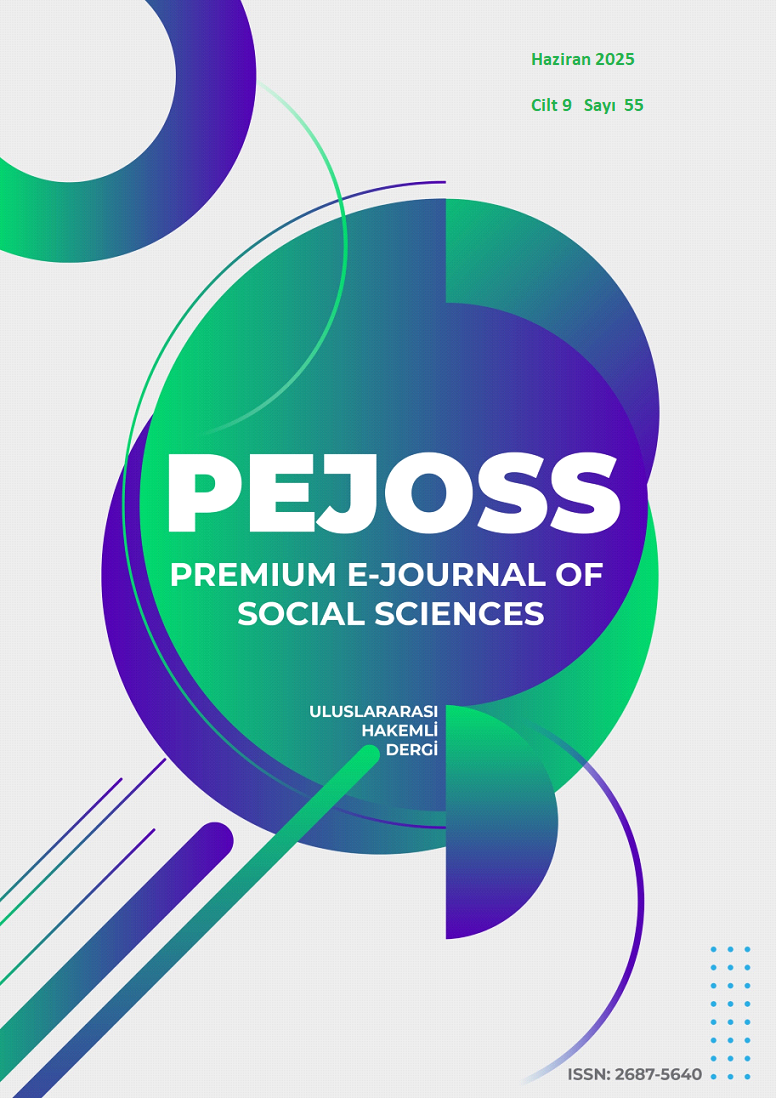Sample Practices on Meaning and Creative Approach in Graphic Illustration Works
DOI:
https://doi.org/10.5281/zenodo.15807605Keywords:
Visual Communication Design, Illustration, Graphic Illustration, Creative Approach, Drawing-Meaning RelationshipAbstract
Graphic illustrations have become the modern face of the field by enabling the message to be conveyed more effectively, especially with the development of digital possibilities in today's world of images. Of course, there can be many variables for a more effective message. The first condition in the field of illustration is of course related to the 'use of an original plastic language'. It is of course important how the illustrator approaches the technique and how he brings together all the elements that make up the composition and in what relationship. However, the inclusion of a purely descriptive form of expression in illustrations is no longer sufficient on its own for a contemporary appearance. The rapid increase in the use of artificial intelligence today is a different development that reinforces this situation. Accordingly, the most decisive change here will be for the illustrator to redefine the logic of illustration according to the age. In short; rather than a description that will be made with a merely descriptive attitude, it is necessary to use illustration approaches that will be developed according to the detailed analysis of the content. After this point, it is even more important for the illustrator to direct the viewer to think, question or take a stance. In this research, it was aimed to emphasize the necessity of creating meaning in terms of message transmission and therefore content analysis. After a detailed analysis study, this time it was tried to explain with sample practices how, with which methods and to what extent creative approaches can be displayed visually. For this purpose, the studies conducted within the scope of the Graphic Drawing course in the 2nd year curriculum of the Graphic Arts Department of the Faculty of Fine Arts of Marmara University constitute the sample of the research. In the practice phase of the research method, the relationship between graphic illustration and creative content was experienced by the students themselves, and various definitions were made, and it was shown how visual descriptions actually shape a creative discourse in the resulting productions.
Downloads
References
Bayar, Z. (2023). Deneyim Tasarımı Bağlamında Sayısal Yaratıcılığın Bugünün Tasarım Ortamına Getirdikleri. İstanbul Aydın Üniversitesi Güzel Sanatlar Fakültesi Dergisi, 9(17), 53-68.
Becer, E. (2008). İletişim ve Grafik Tasarım (6. Baskı), Dost Yayınları, Ankara.
Bulut, Ş., & Özdal, M. A. (2024). Yapay Zekâ Destekli Grafik Tasarımda Yaratıcılığın Dönüşümü. Nişantaşı Üniversitesi Sosyal Bilimler Dergisi, 12(2), 553-571. https://doi.org/10.52122/nisantasisbd.1480136
Çeken, B. & Terzi, M. F. (2024). Yapay Zeka, Grafik Tasarım ve İnsan Yaratıcılığı: İhap Hulusi Görey’in Afişleri Üzerine Bir Deneme. İstanbul Arel Üniversitesi İletişim Çalışmaları Dergisi, 13(26), 269-300.
Deveci, M. & Bulut, E. (2016). Grafik tasarımda anlam bağlantılarının kurulmasına ilişkin program önerisi. Marmara Üniversitesi Atatürk Eğitim Fakültesi Eğitim Bilimleri Dergisi, 43(43), 85-115. https://doi.org/10.15285/ebd.65838
Ermiş, İ. S. (2023). Sözlü ve yazılı dile eşlik eden illüstrasyonun geleceği ve Yapay Zekâ. RumeliDE Dil ve Edebiyat Araştırmaları Dergisi, (34), 168-185. https://doi.org/10.29000/rumelide.1317066.
Gürsözlü, S. (2006). Reklam Sektöründe İllüstrasyon ve Fotoğraf Kullanımının Tasarım Çözümlemelerinde Gerekliliği [Yayımlanmamış Yüksek Lisans Tezi]. Güzel Sanatlar Enstitüsü, Marmara Üniversitesi.
Kaptan, S. & Sayın, Z. (2020). Grafik Tasarım Bağlamında İletinin Görsel Tasarımlara Dönüştürülmesi Süreçleri. İdil Sanat ve Dil Dergisi, (69), 805–820. https://doi.org/10.7816/idil-09-69-07
Karabulut, B. (2021). Yapay Zeka Bağlamında Yaratıcılık ve Görsel Tasarımın Geleceği. Elektronik Sosyal Bilimler Dergisi, 20(79), 1516-1539. https://doi.org/10.17755/esosder.844536
Karaçeper, S. (2018). Dijital Teknoloji ve Grafik Tasarımda Yenilikler. İstanbul Aydın Üniversitesi Güzel Sanatlar Fakültesi Dergisi, 4(8), 73-83.
Mamur, N. (2012). Görsel Sanatlar Eğitiminde Nitel Araştırmalar için Bir Döküman: Portfolyo. Eğitim ve Bilim, 37(165), 194-207.
Özcan, A. (2019). Grafik Tasarımcının Özgün Üretim Sürecinde Yaratıcılık Sorunu [Yayınlanmamış Yüksek Lisans Tezi]. Sosyal Bilimler Enstitüsü, Muğla Sıtkı Koçman Üniversitesi,
Satılmışoğlu, A. C. Y. (2022). Tasarımda Yaratıcılığın Görsel Düşünme ve Eskiz ile İlişkisi [Yayımlanmamış Yüksek Lisans Tezi]. Güzel Sanatlar Enstitüsü, Anadolu Üniversitesi.
Downloads
Published
How to Cite
Issue
Section
License
Copyright (c) 2025 Premium e-Journal of Social Science (PEJOSS)

This work is licensed under a Creative Commons Attribution 4.0 International License.


